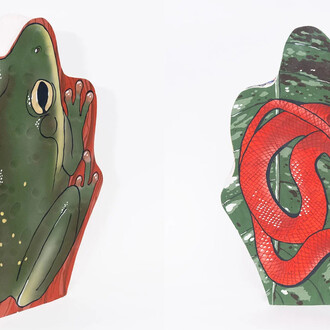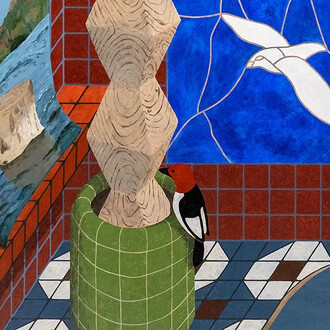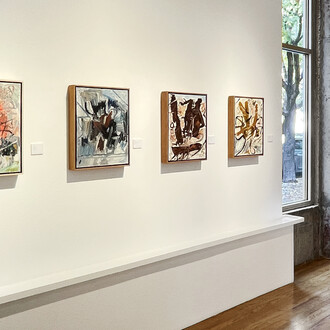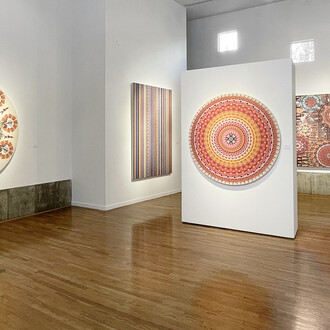David B. Smith Gallery is proud to present the first solo exhibition from Penelope Umbrico with the gallery, Range. This exhibition considers an analog history of photography within the digital torrent that is its current technological manifestation. For this project, Umbrico focuses on iconic images of mountains in various online and print media such as Aperture’s Masters of Photography book series. Utilizing myriad iPhone apps, Umbrico re-photographs the Masters’ mountains and processes them through their multiple light leak filters that simulate the mistakes of analog film photography.
These filters are especially absurd in the context of both analog photography and smart-phone camera technology, as “Master” photographers would never accept such mistakes in their prints, and the impossibility of holes, gaps, or spatial volume necessary to produce these effects stands in opposition to the digital device simulating them. The resultant hallucinogenic colors and undulating moirés disorient and dislodge any perception of stability in the mountain, the Master (most often gendered as male), and the photographic medium itself. In this work the mountain, the oldest landmark, site of orientation, and spiritual contemplation, becomes unstable, mobile, has no gravity, and changes with each iteration.
In the Project Room, Master Copy/Copy (Mount Moran) (2014) takes as its starting point the image of a mountain in the exhibition for a further investigation of the idea of a master point of view. Umbrico created a 3D model in collaboration with Thomas Storey, who translated Google Earth’s satellite photographs of the earth’s surface—the tiled texture-mapped model we’ve come to know as Earth online. In Umbrico’s work, the stable form of the mountain moves through phases: from a singular monument in a photograph (a process which begins with natural light), through infinitely reproducible and distributable code on the web (manufactured light), into a 3D print, then as an inverted silicone mold, and finally as reconstituted earth again, made multiple; a small cast gypsum specter of a mountain.
Range presents a dialogue between distance and proximity, limited and unlimited, the singular and the multiple, the fixed and the itinerant, the master and the copy. And if the mountain was once stable and fixed, our current climate forces reconsideration of this certainty; in an era of alternate at truths nothing is stable, everything is fragile.
Penelope Umbrico offers a radical reinterpretation of everyday consumer and vernacular images. Umbrico works “within the virtual world of consumer marketing and social media, traveling through the relentless flow of seductive images, objects, and information that surrounds us, searching for decisive moments—but in these worlds, decisive moments are cultural absurdities.” She finds these moments in the pages of consumer product mail-order catalogs, travel and leisure brochures, and websites like Craigslist, Ebay, and Flickr.
Identifying image typologies—candy-colored horizons and sunsets, books used as props—brings the farcical, surreal nature of consumerism to new light. Selected public collections include Denver Art Museum, Guggenheim Museum (NY), International Center of Photography (NY), McNay Museum of Art (TX), Metropolitan Museum of Art (NY), Museum of Contemporary Photography (IL), Museum of Contemporary Art, San Diego (CA), Museum of Modern Art (NY), and the San Francisco Museum of Modern Art (CA), Los Angeles County Museum of Art (CA), among others. She lives in New York City.
















